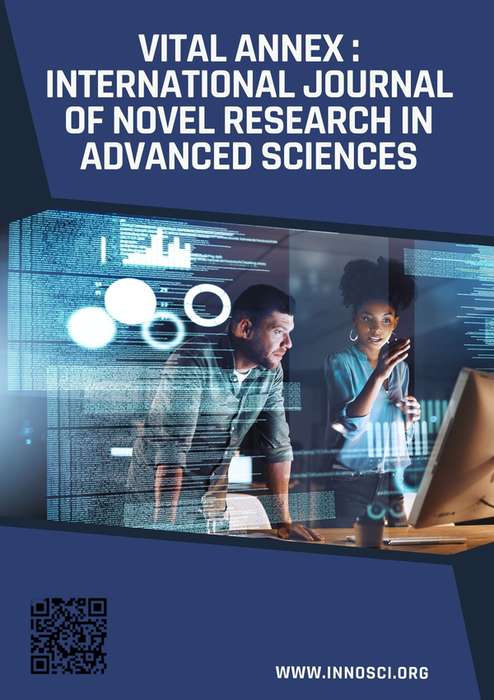The Role of Direct Investment in Small Educational Institutions as a Driver of Economic Growth in Uzbekistan
Keywords:
Direct Investmen, Small educational institutions, Uzbekistan, Economic GrowthAbstract
This study investigates the extent to which direct investments in small educational institutions have been a catalyst for economic growth in Uzbekistan. Previous writings highlight the wide-ranging links between education and development. Little is known about the specific impacts of targeted investments in small, often semi-formal institutions, such as language centers and vocational schools. The research employed an econometric analysis of regional data, including stakeholder interviews and, when applicable, case studies. Research outcomes suggest that increasing investments in the student body can significantly improve overall wages and employment rates. Investments also facilitate the growth and creation of small to medium-sized enterprises (SMEs). Difference-in-differences analysis confirms the gains from targeted inventions that were introduced in 2020. In addition to difference-in-differences, instrumental variables analysis reinforces the validity of the results by addressing any possible endogeneity concerns. Available case studies heavily highlight direct investments in proper teaching methods and technology. In underserved regions, these factors can translate into much-improved graduate outcomes and even local economic benefits. Therefore, this study can conclude that direct investments in small educational institutions in Uzbekistan represent a strategic lever for inclusive modernization.
References
[1] Aslam, Monazza, Rabea Malik, Shenila Rawal, Pauline Rose, Anna Vignoles, and Lydia Whitaker. "Methodological Lessons on Measuring Quality Teaching in Southern Contexts, with a Focus on India and Pakistan." Research in Comparative and International Education 14, no. 1 (2019): 77–98. https://doi.org/10.1177/1745499919828929.
[2] Hanushek, Eric A., and Ludger Woessmann. "Education and Economic Growth." Oxford Research Encyclopedia of Economics and Finance 1, no. 1 (2021). https://doi.org/10.1093/acrefore/9780190625979.013.651.
[3] Muratov, Bobir, and Stephen Wilkins. "The Development of Uzbekistan as a Transnational Higher Education Hub: Government and Institution Rationales, and Early Outcomes." Journal of Higher Education Policy and Management, March 2024, 1–19. https://doi.org/10.1080/1360080x.2024.2324404.
[4] Oliver, John. Uzbekistan - Education Sector Analysis. Washington, DC: World Bank, 2025. https://documents.worldbank.org/en/publication/documents-reports/documentdetail/379211551844192053/uzbekistan-education-sector-analysis.
[5] Patrinos, Harry Anthony, and George Psacharopoulos. "Chapter 4 - Returns to Education in Developing Countries." In Handbook on the Economics of Education, edited by Steve Bradley and Colin Green. Academic Press, 2020. https://www.sciencedirect.com/science/article/abs/pii/B9780128153918000045.
[6] UNESCO. 2022 GEM Regional Report on Non-State Actors in Education - South Asia Overarching. Paris: UNESCO, November 2022. https://www.unesco.org/gem-report/en/publication/2022-south-asia-report-non-state-actors-education.
[7] Wilkins, Stephen, and Bobir Muratov. "Uzbekistan Ranks Third Globally as Host of International Branch Campuses." International Higher Education, no. 119 (2024): 25–27. https://ejournals.bc.edu/index.php/ihe/article/view/18025.
[8] Eshonkulova, Nurjaxon. "Trends of Development of Private Higher Education in Uzbekistan." Scientific Bulletin of Namangan State University 3, no. 2 (2024): 45–52. https://journalsnuu.uz/index.php/1/article/view/3820.
[9] Jonuzokov, M. K. "Issues of Increasing the Investment Attractiveness of Higher Education Based on PPP in Uzbekistan." Academic Finance 2, no. 1 (2023): 101–112. https://finance.tsue.uz/index.php/afa/article/view/434.
[10] Meliboev, Aziz. "A New Vocational Education System Is under Development in New Uzbekistan." American Journal of Economics and Business Management 7, no. 3 (2024): 33–40. https://globalresearchnetwork.us/index.php/ajebm/article/view/3088.
[11] Niu, Shuang, Purevjav Purevjav, and Nigora Abdurazzokova. "Expanding Preschool Education Boosts Women’s Employment in Uzbekistan." World Bank Policy Brief, 2022. https://timesca.com/expanding-preschool-education-boosts-womens-employment-in-uzbekistan.
[12] Turdiyeva, Sitora, and Gulhayo Buriyeva. "Quality and Efficiency of Private and Public Higher Education in Uzbekistan." European View 5, no. 2 (2025): 88–97. https://brightmindpublishing.com/index.php/ev/article/view/589.
[13] UNESCO. "Skills Development for Employability in Rural Areas of Uzbekistan." Paris: UNESCO, 2022. https://www.unesco.org/en/articles/skills-development-employability-rural-areas-uzbekistan
[14] Soliev, Mukhammadkhon. "The Investment Prospects of Uzbekistan." International Journal of Scientific and Research Publications (IJSRP) 10, no. 3 (2020): 118–130. https://www.ijsrp.org/research-paper-0320.php?rp=P1009793




